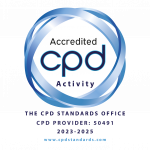Supporting Neurodiversity within Hospitality
Supporting Neurodiversity within Hospitality
Any employer knows that to get the best out of their teams, they have to play to the individuals’ strengths and offer support where needed. For the neurodiverse, communicating information in a format that works with, rather than against, their learning style can be critical to their performance and career progression.
A high proportion of neurodiverse types such as Dyslexia, ADHD and Dyspraxia, are often attracted to “hands-on” industries such as the Arts, Sports and Hospitality. They tend to be visual or hands-on learners, with high levels of social intelligence and a capacity to process huge amounts of information when presented in a format that fits their learning style.
Learning & Development Managers are key to identifying and designing tools to support a diverse workforce, however Managers and Senior Leaders have a large part to play too and should consider broadening their methods of communication, keeping a variety of learning styles in mind.
The following tools not only support a wide spectrum of learning styles but is good practise when it comes to any training and communication. All good communicators consider their audience first.
Use technology to support literacy.
Encourage the use of spell check and grammar apps, along with dictation and read-aloud technology which are widely available on smartphones, Google sheets and Microsoft.
Aim to keep LMS platforms minimal and clutter-free.
Too much information in one place can be overwhelming and difficult to navigate. Many neurodiverse learners are sensitive to their environment: Too much background noise or visual clutter can impair their ability to process information.
Make sure any learning is clearly laid out in order of due date or importance so individuals can easily see what to prioritize and important information isn’t “hidden”.
Use video, audio, and visuals in training materials and communication.
Create online courses with plenty of video, audio and visual content. This will break up large blocks of information which can be difficult to process. People with Dyslexia in particular, often think exclusively with images rather than words. Try using a mixture of photos, colour coding and diagrams wherever possible, as these often stick in people minds and helps to anchor key information.
Include lots of images or videos in training documents and share them via your LMS or shared folders. Make sure they’re easily accessible for people using their Smartphones or tablets.
Keep emails and written communications short and to the point.
For some, large blocks of text can be so overwhelming that they won’t even attempt to read it. Think about breaking up your text into manageable chunks, using bullet points, highlighting important information in bold or even colour coding the content.
Consider your font style and spacing.
Use dyslexic-friendly fonts such as Arial and Comic Sans, Verdana, Tahoma, Century Gothic, Calibri, Open Sans. Because the letters are less crowded this prevents the letters from “running together”. Use wider paragraph spacing and a 12-14 font size to make it easier to read.
Use graphs to communicate data and reporting.
Putting data into graph form is easy to do and makes the information much quicker for your audience to process and analyse. You can also have a detailed spreadsheet to hand for those who require more in-depth analysis.
Provide notes at meetings and training sessions.
Many neurodiverse people often struggle with focusing their attention, forgetfulness, or organisation skills. Always follow up meetings or training sessions with a list of actions, key learning points, confirm dates and deadlines as well as sharing the meeting notes.
Automate processes wherever possible.
For those who struggle with organisation, technology tools and apps can be a godsend. Whether it’s shared documents, checklists apps which send you reminders notifications, use of calendars to plan and structure your workload, or stock management systems which calculate and predict your stock uses based on sales and forecasting. This technology will not only support your staff but make your business more efficient too.
Don’t rely on training collateral alone to communicate information.
Discussion, demonstration and kinetic learning promotes a more thorough understanding and are effective training methods for both neurodiverse and neurotypical learners.
Repetition, repetition, repetition…
Don’t be afraid to repeat important information many times in multiple formats. Repetition is key to learning and retaining information and you’ll also be supporting multiple learning styles at the same time.
Be careful not to prescribe.
The key here is to offer a variety of options to everyone, but never to dictate. Even those with the same condition will experience it differently and will have their own preferences. Ask people which tools they find most useful or allow them to invent their own. Often this helps to process the information and clarify their ideas.
Summary
It’s clear, Hospitality attracts a large proportion of neurodiverse learners, many of whom are highly successful in their careers. By better supporting a variety of learning styles, being open and sharing our experiences, we can also change misconceptions and celebrate the numerous success stories.
As observed by Andrew Sutherland’s article for ACAS, Neurodiversity in the Workplace (2016), “It’s a reminder of the simple fact that a person’s competence doesn’t exist in a social vacuum- rather it’s defined, by the values of the culture to which we belong”
We have the power to create the change we want to see and take our industry from strength to strength.
If you have any neurodiversity in Hospitality success stories, we’d love to hear from you.
Resources
https://www.xperthr.co.uk/commentary-and-insights/celebrating-neurodiversity-at-work/161734/





